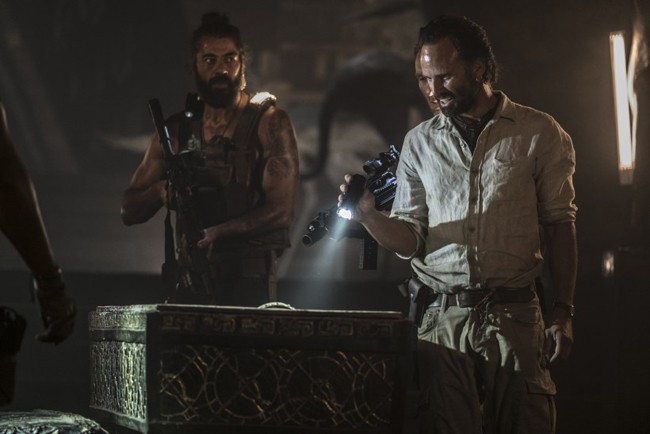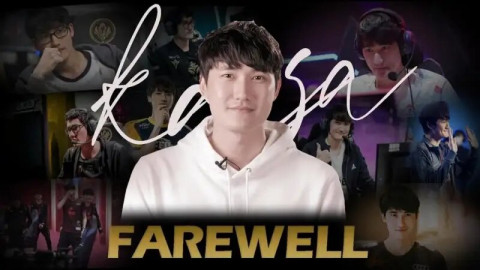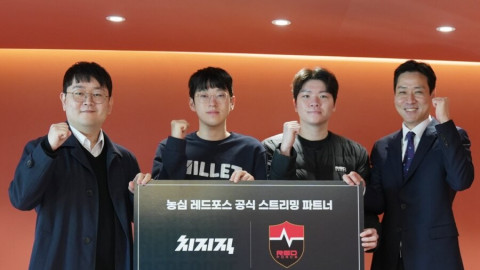Tomb Raider – the big-screen adaptation of Square Enix’ iconic video game series – is currently playing in theaters, and it is a step above the typical video game movie. With Oscar-winning actress Alicia Vikander giving it her all as Lara Croft and plenty of breathtaking action set-pieces, it had me on the edge of my seat from beginning to end, and it points to a once-fantastical world where good video game movies actually exist. We hope other studios taken note of Tomb Raider’s success, because it wasn’t a fluke – these are five reasons Tomb Raider is better than the average video game movie.
Alicia Vikander is Lara Croft

The posters for Tomb Raider made a bold proclamation: “Alicia Vikander is Lara Croft.” The Swedish actress had never played the character before, either in films or video games. Angelina Jolie has experience with the character. Camilla Luddington has experience with the character, and is returning to play Croft in the Shadow of the Tomb Raider game. But Vikander went into the film with the confidence of an actress who had already been playing Lara Croft for years, and it shows on screen.
In quieter, dialogue-heavy scenes, Vikander’s humor and determination shine through, as she mocks those who underestimate her. But it’s when she’s forced to take a life in a scene reminiscent of the 2013 rebooted game that it’s tough to tell where Vikander ends and Lara Croft begins. You can sense the horror and pain in her voice as she drowns an assailant, but there’s no time to dwell on it: She has more ass to kick.
And boy does she kick ass. From taking out unsuspecting mercenaries with her bow to mixed-martial-arts combat, Croft is anything but a pushover. Unlike in the rebooted game – which serves as a rough template for the film – Lara starts off with some combat training, and it’s satisfying every time we get to see another one of her skills put to the test.
The film takes its time

A problem we’ve seen in several video game films over the years is their insistence on getting right into the action, as if they have to avoid the “tutorial” sections that typically open longer action-adventure titles. Assassin’s Creed fell into this trap, as did the Halo: Nightfall digital series. In contrast, Tomb Raider spends much of its first hour getting us familiar with Lara, giving us insight into her life in London and the trouble she has letting go of the past.
When the action does begin to pick up, we still aren’t thrust into the titular Tomb Raiding right away. Lara first visits Japan in search of a man with information regarding his missing father, which ends up resulting in a chase sequence going in two different directions – first with Lara chasing a thief, then the thief chasing her. It’s silly and doesn’t affect the central narrative, but it gives us a taste of Lara’s action-hero skills before she has to really put them to the test.
Its villain is the right combination of evil and stupid

Walton Goggins has been playing slimy villains for the majority of his acting career, and in his role as villain Mathias Vogel, he’s able to put his devilish talents on full display. Intent on opening the secret tomb of Queen Himiko to satisfy the Illuminati-like Trinity organization, Vogel lets nothing get in his way. A slave laborer stops working for two seconds? That’s a bullet to the head, but for Croft, he’s willing to make her suffer a little bit more before finishing the job.
And that is because Vogel is not just evil, but also a complete idiot. He always underestimates Lara Croft’s abilities just enough to let her get the edge, and it’s here where Tomb Raider is most clearly a video game movie. By always giving Lara even the slightest advantage in a deadly situation, we feel as if we can will her toward her goal. Sometimes, it’s as simple as a dumb villain letting her escape down raging rapids, or by challenging her to a fistfight instead of just shooting her. Were Vogel smarter, he wouldn’t ever allow Croft to get away in the first place, and the film would be both depressing and dull – who wants a video game movie like that?
It isn’t a slave to its source material

Tomb Raider’s central plot is largely the same as the rebooted game, with several of the same characters and locations, but it never feels trapped by the latter’s long-winded story. Instead, it uses the game as the basic framework for a tale much more focused on Croft’s self-dependence than on her ability to survive in the wilderness
Allied characters, most notably the sailor Lu Ren, recognize her courage and leadership almost immediately and fall into supporting roles, but there are far fewer of these characters than in the game. The action is centered on Lara, and given that the film is two hours rather than dozen or so of the game, cutting out everything that isn’t essential was a smart move.
There is one casualty in the transition to film: the puzzle element. Though very prevalent in the games, there are only a few moments like this in the film and Lara solves most of them immediately. It’s not the worst filmmaking sin in the world, but it would have been nice to let the audience solve these with Lara instead of just watching her solve them.
But it still has some moments meant purely for fans

It feels like a slightly different beast than the recent games, but the Tomb Raider film still manages to pack in a few scenes that offer a wink and a nod to anyone who played them. Lara leaps off a ship into the roaring sea, finds herself tumbling out of a rusty airplane, and climbs up a rocky wall using a pick, all exactly as she did in the game. These moments don’t feel out of place, however, so those without prior Tomb Raider experience won’t feel like they’re missing anything.
Oddly, the film makes reference to the USP pistols used by Angelina Jolie in the previous films, as well, even though don’t play much of a role in the recent games. Whether you’ve only played the games or you’ve only seen the Jolie movies, there is something you’ll recognize!
Sort by:
Comments :0






